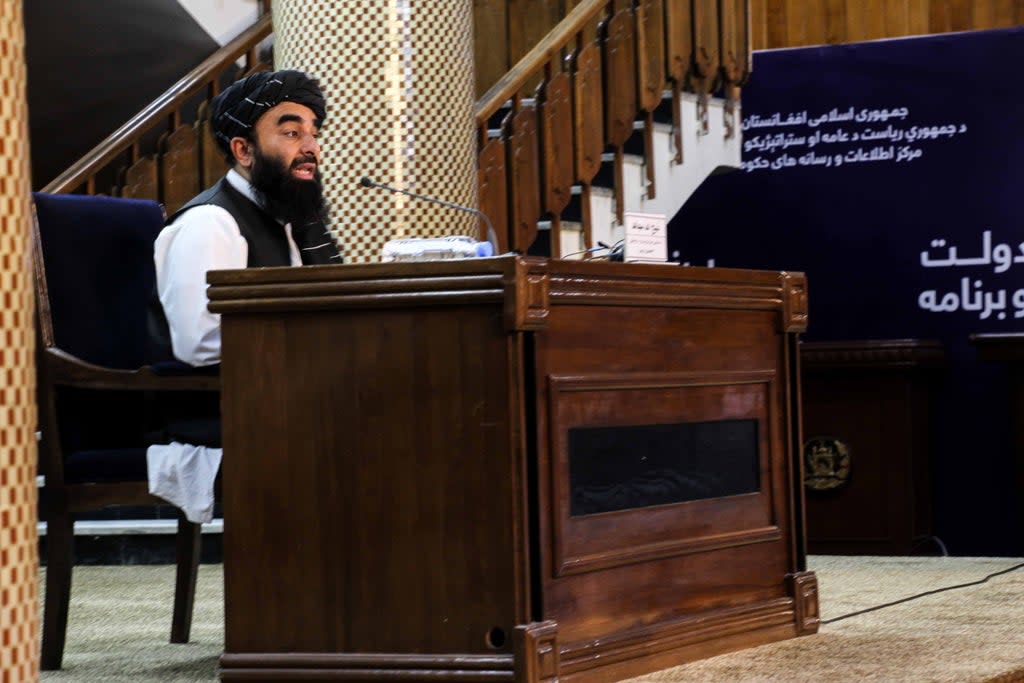It’s been 20 years since 9/11, yet the west is still cherry-picking policy on Islamist terrorism

It’s been 20 years since the September 11 attacks, and “Islamistterrorism” and the goal of countering it have become a useful framework for governments across the globe to justify foreign and domestic policies and serve geopolitical goals, especially in the context of the Middle East.
Governments around the world have found in the notion of Islamistterrorism a convenient way to present themselves as a force of good in the face of the “evil terrorists” — and sometimes to justify pragmatic yet problematic behaviour.
For the west, Islamist terrorism became the greatest evil of them all in the Middle East, and countering it trumped many other foreign policy concerns in the region. Alliances between countries with few shared values were formed or strengthened in the name of security cooperation against the perceived threat.
The United States turned a blind eye to illicit arms shipments to dictators like the late Ali Abdullah Saleh of Yemen on the basis that he was an ally in the fight against al-Qaeda. Saleh ended up eventually allying himself with al-Qaeda against US partners.
Sometimes Islamist terrorism was used to brush difficult policy options under the rug. Syria came to be a victim of this as western countries, especially the US and the UK, chose to focus on fighting Isis there rather than on trying to resolve the Syrian conflict. Echoing their rally for public support for the “war on terror” in the aftermath of 9/11, it was easier for the American and British governments to promote countering Isis to their respective constituents as their main goal in Syria, than to get buy-in from the same constituents for military action against the regime of Bashar al-Assad, although the Assad regime itself also coordinated with Isis to crush its opponents.
For governments in the Middle East, Islamist terrorism became a convenient excuse to crack down on political dissent. Bashar al-Assad labelled all his political opponents in Syria “terrorists”, while other countries in the region, such as in the Gulf, persecuted activists they accused of being affiliated with Islamist terrorist groups, even if this accusation was baseless.
Iran found in the spread of Sunni jihadism a convenient way of rebranding its own Shiite jihadism as counterterrorism. Iran-backed militant groups in Arab countries like the Popular Mobilization Units (PMUs) and Hezbollah got involved in battles against Sunni Isis in the name of national defence. This won the PMUs political and economic status in Iraq, increasing Iran’s influence there. The Lebanese group Hezbollah sent fighters to Syria in aid of the Assad regime, but justified this as being about protecting Lebanon from Sunni jihadists and used this framework to increase its own control in Lebanon.
The rebranding of Shiite jihadism was a deliberate effort by Iran to deflect attention from the destabilising activities Iran-backed groups were involved in. Some of these activities, like sectarian-based violence, have also ended up being used by Sunni jihadists to rally support for themselves.
The tragic developments in Afghanistan show that the selective use of Islamist terrorism continues beyond the Middle East. The Taliban’s behaviour has many similarities with that of Isis, and yet the US has declared the latter as being the enemy of choice in the country.
Many Arab countries have kept silent about the Taliban’s takeover of Afghanistan because of worry about its links with al-Qaeda and the prospect of provocation leading to retaliation by terrorist cells that remain present across the Middle East. This is because of the expectation of soon having normal diplomatic relations with the Taliban as the new rulers of Afghanistan, and also because the Taliban and Isis are enemies and the former says it wants to crush the latter. Iran’s projected hostile stance towards Sunni jihadism is in stark contrast to its own pragmatic, accommodating behaviour towards the Sunni Taliban.
At the height of the Cold War, the US supported the Afghan mujahideen which eventually fostered the very terrorists that attacked the US on 9/11. Today, the US is choosing not only to overlook the similarities between the Taliban and Isis in the name of American national interest, but also to frame the Taliban as the local force best suited to fight the branch of Isis in Afghanistan. “Islamist terrorism” is in the eye of the beholder.
Lina Khatib is director of the middle east and North Africa programme, Chatham House
Read More
What is the difference between the Taliban and Isis?
Why did US leave Afghanistan and how much did America spend?
The Taliban: Who are they, who are the leaders and what do they want?

 Yahoo News
Yahoo News 
